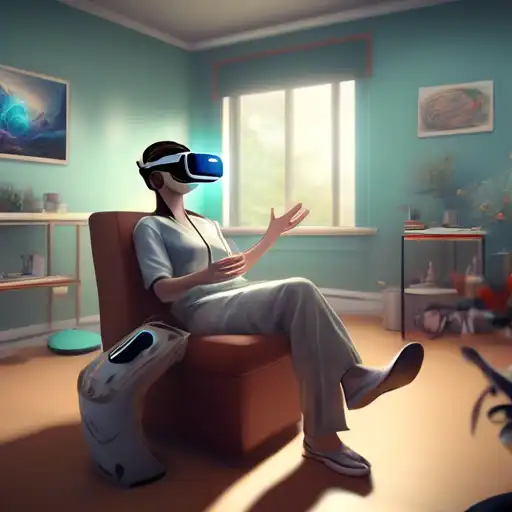The Transformative Role of Virtual Reality in Modern Therapy Practices
Virtual Reality (VR) technology has transcended its initial entertainment-centric applications, paving the way for groundbreaking uses in various sectors, including healthcare. Among its most promising applications is in the field of therapy, where VR is being used to treat a wide range of psychological and physical conditions. This article explores how VR is revolutionizing therapy, offering new hope and innovative solutions for patients and therapists alike.
Understanding VR Therapy
VR therapy involves the use of virtual reality technology to create simulated environments for therapeutic purposes. These environments can be tailored to the specific needs of the patient, providing a controlled setting where individuals can face and work through their issues under the guidance of a therapist. The immersive nature of VR makes it an effective tool for treating conditions such as PTSD, anxiety disorders, and phobias.
Applications of VR in Therapy
The applications of VR in therapy are vast and varied. Below are some of the key areas where VR is making a significant impact:
- Exposure Therapy: VR allows patients to confront their fears in a safe, controlled environment. For example, individuals with a fear of heights can experience virtual heights without any real-world risk.
- Pain Management: VR has been shown to reduce pain perception in patients undergoing painful procedures or suffering from chronic pain, by distracting the mind with immersive experiences.
- Rehabilitation: Stroke survivors and individuals with physical injuries can use VR-based exercises to improve motor skills and coordination in a motivating and engaging way.
- Mental Health: VR is being used to treat conditions like depression and anxiety, offering scenarios that promote relaxation and stress reduction.
The Benefits of VR Therapy
VR therapy offers several advantages over traditional therapy methods. These include:
- Accessibility: Patients can receive therapy from the comfort of their homes, making it easier for those with mobility issues or living in remote areas.
- Customization: Therapists can tailor the virtual environment to meet the specific needs and progress of each patient.
- Engagement: The immersive nature of VR makes therapy sessions more engaging and less intimidating for patients, potentially improving outcomes.
- Safety: Patients can explore and confront challenging situations in a risk-free environment, which is particularly beneficial for exposure therapy.
Challenges and Considerations
Despite its potential, VR therapy is not without challenges. Issues such as the high cost of VR equipment, the need for technical expertise, and concerns about patient privacy and data security must be addressed. Additionally, more research is needed to fully understand the long-term effects and efficacy of VR therapy across different conditions.
The Future of VR in Therapy
As VR technology continues to evolve, its applications in therapy are expected to expand. Innovations such as more realistic simulations, the integration of AI for personalized therapy sessions, and the development of affordable VR solutions are on the horizon. These advancements promise to make VR therapy more accessible and effective, offering new possibilities for treatment and recovery.
In conclusion, VR is transforming the landscape of therapy, providing innovative tools that enhance traditional treatment methods. While challenges remain, the potential of VR to improve mental and physical health outcomes is undeniable. As technology advances, we can expect VR therapy to become an integral part of healthcare, offering hope and healing to countless individuals.
